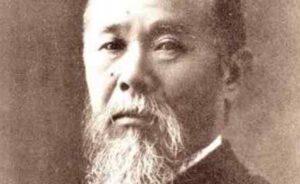Note: The Government of japan does not function under the system of a president but under the political operation of a Prime Minister.
Japan has had a long history of political leadership, with the role of Prime Minister being central to the governance of the country.
The Prime Minister of Japan is the head of government and exercises executive power, alongside other government officials, to steer the nation.
Below is a detailed list of the Prime Ministers of Japan, arranged in chronological order with the years of their tenure.
READ ALSO: Presidents That Have Ruled India Till Date
List Of Prime Ministers of Japan
| Prime Minister | Years in Office |
|---|---|
| Ito Hirobumi | 1885–1888 |
| Kuroda Kiyotaka | 1888–1889 |
| Yamagata Aritomo | 1889–1891 |
| Matsukata Masayoshi | 1891–1892 |
| Itō Hirobumi | 1892–1896 |
| Ôkuma Shigenobu | 1898–1899 |
| Saionji Kinmochi | 1900–1901 |
| Katsura Taro | 1901–1906 |
| Saionji Kinmochi | 1906–1908 |
| Katsura Taro | 1908–1911 |
| Yamamoto Gonnohyōe | 1911–1912 |
| Saionji Kinmochi | 1912–1913 |
| Okuma Shigenobu | 1913–1914 |
| Yamamoto Gonnohyōe | 1914–1916 |
| Terauchi Masatake | 1916–1918 |
| Hara Takashi | 1918–1921 |
| Takahashi Korekiyo | 1921–1922 |
| Katō Takaaki | 1922–1923 |
| Yamamoto Gonnohyōe | 1923–1924 |
| Kato Takaaki | 1924–1926 |
| Tanaka Giichi | 1927–1929 |
| Hamaguchi Osachi | 1929–1931 |
| Inukai Tsuyoshi | 1931–1932 |
| Fumimaro Konoe | 1937–1939 |
| Hirota Koki | 1939–1940 |
| Konoe Fumimaro | 1940–1941 |
| Tojo Hideki | 1941–1944 |
| Koiso Kuniaki | 1944–1945 |
| Suzuki Kantarō | 1945 |
| Higashikuni Naruhiko | 1945 |
| Yoshida Shigeru | 1946–1954 |
| Hatoyama Ichirō | 1954–1956 |
| Ishibashi Tanzan | 1956–1957 |
| Kishi Nobusuke | 1957–1960 |
| Ikeda Hayato | 1960–1964 |
| Sato Eisaku | 1964–1972 |
| Tanaka Kakuei | 1972–1974 |
| Miki Takeo | 1974–1976 |
| Fukuda Takeo | 1976–1978 |
| Ohira Masayoshi | 1978–1980 |
| Suzuki Zenko | 1980–1982 |
| Nakasone Yasuhiro | 1982–1987 |
| Takeshita Noboru | 1987–1989 |
| Uno Sosuke | 1989–1991 |
| Miyazawa Kiichi | 1991–1993 |
| Hata Tsutomu | 1994 |
| Murayama Tomiichi | 1994–1996 |
| Hashimoto Ryutaro | 1996–1998 |
| Obuchi Keizō | 1998–2000 |
| Mori Yoshirō | 2000–2001 |
| Koizumi Junichirō | 2001–2006 |
| Abe Shinzo | 2006–2007 |
| Fukuda Yasuo | 2007–2008 |
| Aso Taro | 2008–2009 |
| Hatoyama Yukio | 2009–2010 |
| Kan Naoto | 2010–2011 |
| Noda Yoshihiko | 2011–2012 |
| Abe Shinzo | 2012–2020 |
| Suga Yoshihide | 2020–2021 |
| Kishida Fumio | 2021–present |
First Prime Minister of Japan: Itō Hirobumi

Itō Hirobumi was the first Prime Minister of Japan, serving from December 22, 1885, to April 30, 1888. He played a pivotal role in the Meiji Restoration and was instrumental in establishing the modern state of Japan.
His tenure was marked by efforts to modernize Japan’s political and economic systems, laying the groundwork for future developments.
However, his leadership also faced challenges, including political opposition and the complexities of transitioning from a feudal system to a modern government.
Notable Achievements and Downsides
- Achievements: Established the modern office of the Prime Minister and initiated significant reforms in governance.
- Downsides: Faced political opposition and struggled with the complexities of modernization.
Current Prime Minister of Japan: Fumio Kishida

Fumio Kishida has been serving as the Prime Minister since October 4, 2021. He is a member of the Liberal Democratic Party and has focused on various issues, including economic recovery post-COVID-19, foreign relations, and addressing social inequalities.
Kishida’s leadership style emphasizes diplomacy and collaboration, aiming to strengthen Japan’s position on the global stage. However, he faces challenges such as navigating Japan’s aging population and economic stagnation.
Notable Achievements and Downsides
- Achievements: Focused on economic recovery and strengthening international relations, particularly with the United States and neighboring countries.
- Downsides: Challenges in addressing domestic issues such as economic inequality and an aging population.
READ ALSO: Presidents That Have Ruled Bangladesh Till Date
Conclusion
The role of the Prime Minister in Japan has evolved significantly since the establishment of the office in the late 19th century. Each Prime Minister has faced unique challenges and opportunities, shaping the political landscape of Japan.
The current leadership under Fumio Kishida aims to navigate contemporary issues while building on the legacies of his predecessors.
The history of Japan’s Prime Ministers reflects the country’s journey towards modernization and its ongoing efforts to address both domestic and international challenges.
